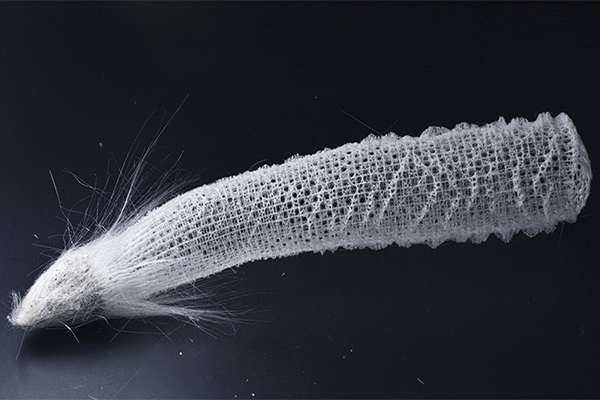
Full Text:
Sea sponges known as Venus’ flower baskets remain fixed to the seafloor with nothing more than an array of thin, hair-like anchors made essentially of glass. It’s an important job, and new research suggests that it’s the internal architecture of those anchors, known as basalia spicules, that helps them do it.
The spicules, each about half the diameter of a human hair, are made of a central silica (glass) core clad within 25 thin silica cylinders. Viewed in cross-section, the arrangement looks like the rings in a tree trunk. The new study shows that compared to spicules taken from a different sponge species that lacks the tree-ring architecture, the basalia spicules are able to bend up to 2.4 times farther before breaking.Image credit: Michael A. Monn, Brown University